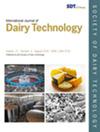Sustainable utilisation of salty whey generated during cheese manufacture: A review
Abstract
Background
Salty whey, a by-product of semihard and hard cheese production, presents significant environmental and economic challenges due to its high salt content. As global cheese production increases, finding sustainable solutions for salty whey utilisation becomes crucial. While salty whey holds potential for both food and industrial applications, a knowledge-gap limits its full utilisation. Addressing this gap is key to promoting bio-circularity, reducing waste and enhancing sustainability in dairy production.
Aims
This review examines the composition of salty whey, processing challenges, potential desalination methods, and current and future applications that contribute to sustainable practices, including the volume of salty whey generated, desalination technologies and valorisation pathways.
Methods
The literature was reviewed on salty whey composition, processing and applications, focusing on desalination methods, industrial uses and knowledge gaps for future research.
Major findings
Global cheese production reached 26 million tonnes in 2023 (excluding processed cheese), with cow milk cheese accounting for 23.8 million tonnes, generating significant by-products, including salty whey. In the UK alone, approximately 95 250 tonnes of salty whey are produced annually. Salty whey constitutes 2–5% of total whey, depending on cheese type and processing. For Cheddar cheese, global production in 2020 is estimated to have generated approximately 1 102 500 tonnes of salty whey. This highlights the need for efficient valorisation methods. Demineralisation techniques, such as size-exclusion chromatography and ion-exchange resins, offer promising solutions, with the latter being commercially viable with low energy consumption and high salt recovery. Salty whey could potentially be repurposed in the dairy industry for processed cheese and whey powder and find applications in nondairy sectors, such as mineral salts, yeast proteins, lactic acid and animal feed.
Industrial implications
Utilising salty whey in these applications enhances resource recycling, reduces the environmental impact of dairy production and supports a circular economy by fully valorising whey by-products.


 求助内容:
求助内容: 应助结果提醒方式:
应助结果提醒方式:


